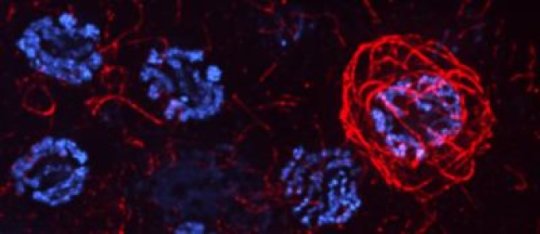[ad_1]
A highly detailed study of how the roundworm C. elegans forms oocytes suggests that the egg-making process leads to the formation and subsequent destruction of cells with an extra nucleus, but that some cellular materials are recycled into new eggs. James Priess of the Fred Hutchinson Cancer Research Center and colleagues, report these findings in a new study published July 19th, 2018 in PLOS Genetics.
When animals create egg cells, a large percentage of the potential eggs get culled through a controlled demolition process called apoptosis. Studies have shown that many of these sacrificed cells could go on to form healthy embryos, and researchers don’t yet understand why animals target so many cells for destruction. In the current study, researchers used live imaging of microscopic cells to observe the formation of eggs inside the gonad of the model roundworm, C. elegans. They saw that when oocytes don’t make the cut, they begin apoptosis by dumping their mitochondria, which act as the powerhouses of cell, into a shared pool of cellular material. The mitochondria then become recycled into new oocytes. The process also involves the formation of oocytes with two nuclei, but these always undergo apoptosis.
The study details the steps of cell death associated with egg formation and shows that the apoptosis machinery effectively recognizes two populations of cells, those with and without an extra nucleus. The researchers also observed early stages of apoptosis that had not yet been identified. These findings will aid future studies of egg development, as well as studies of Alzheimer’s and Huntington’s disease, which both cause certain types of damage to brain cells that are similar to apoptosis.
Story Source:
Materials provided by PLOS. Note: Content may be edited for style and length.
[ad_2]















